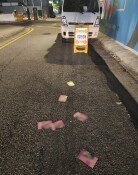Studies shed light on Asian slavery in 16th century
Studies shed light on Asian slavery in 16th century
Posted November. 09, 2021 07:14,
Updated November. 09, 2021 07:14
“Many men and women of all ages came from Joseon as slaves. Some of them were beautiful women. I could buy five Joseon slaves only for 12 escudos.”
This is an excerpt from “My Voyage Around the World,” a travel note penned by Francesco Carletti, an Italian merchant, who was staying in the Japanese port city of Nagasaki in 1598. Back then, Nagasaki was a market frequently visited by European sellers where various races of slaves were traded including Korean, Japanese, Chinese, Bengalese, and African.
Considering the price of a black male slave at 100 escudos, Korean slaves were significantly cheaper, as the Japanese conscripted many Koreans during the Japanese invasion of Korea in 1592, fueling oversupply.
“The Japanese slaves in the age of maritime discovery,” a book recently published by Sanjini, takes a glimpse into the trade of Asian slaves by the Western imperialists in the 16th century including Portugal. Lucio de Sousa, the author of the book and a professor at Tokyo University of Foreign Studies, offers accounts not only on the Korean slaves forcibly removed to Japan during the invasion in 1592 but many Japanese slaves who were sold to the Philippines and Mexico.
Many of the Korean slaves in Japan were potters as demand of pottery was surging in Japan owing to the increasing popularity of tea. The Korean potters settled in Saga Prefecture among other areas gave rise to the Hizen ceramics now representative of Japanese pottery. The massive profits that Japan earned from selling more than 7 million porcelains to the West served as foundation of modernization.
“Studies about the Asian slaves in the age of explorations in the 16th century are insufficient owing to lack of historical materials,” the author said. “I hope more studies will be conducted to help shed light on their presence.”
71wook@donga.com





![반찬통 착색 고민 끝…‘두부용기’ 버리지 말고 이렇게 쓰세요 [알쓸톡]](https://dimg.donga.com/c/138/175/90/1/wps/NEWS/IMAGE/2026/01/09/133126593.3.png)

